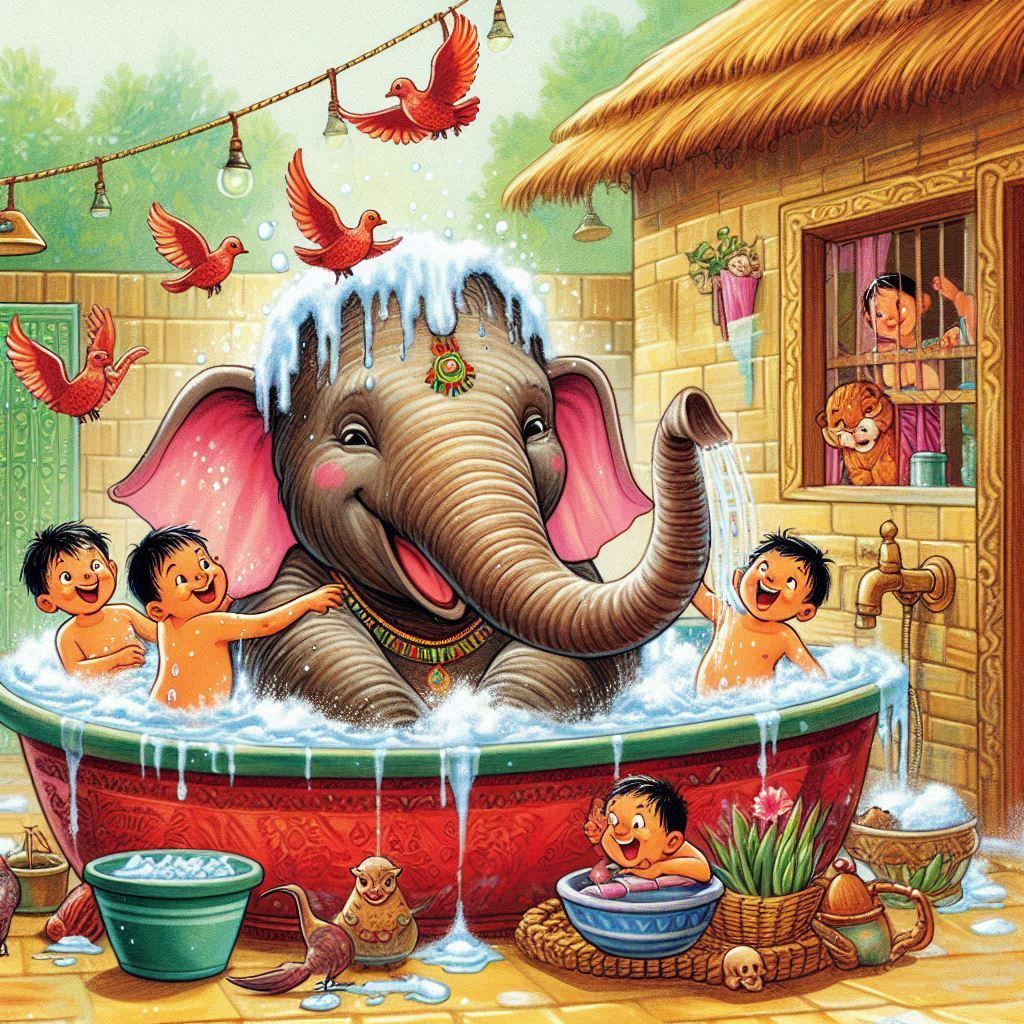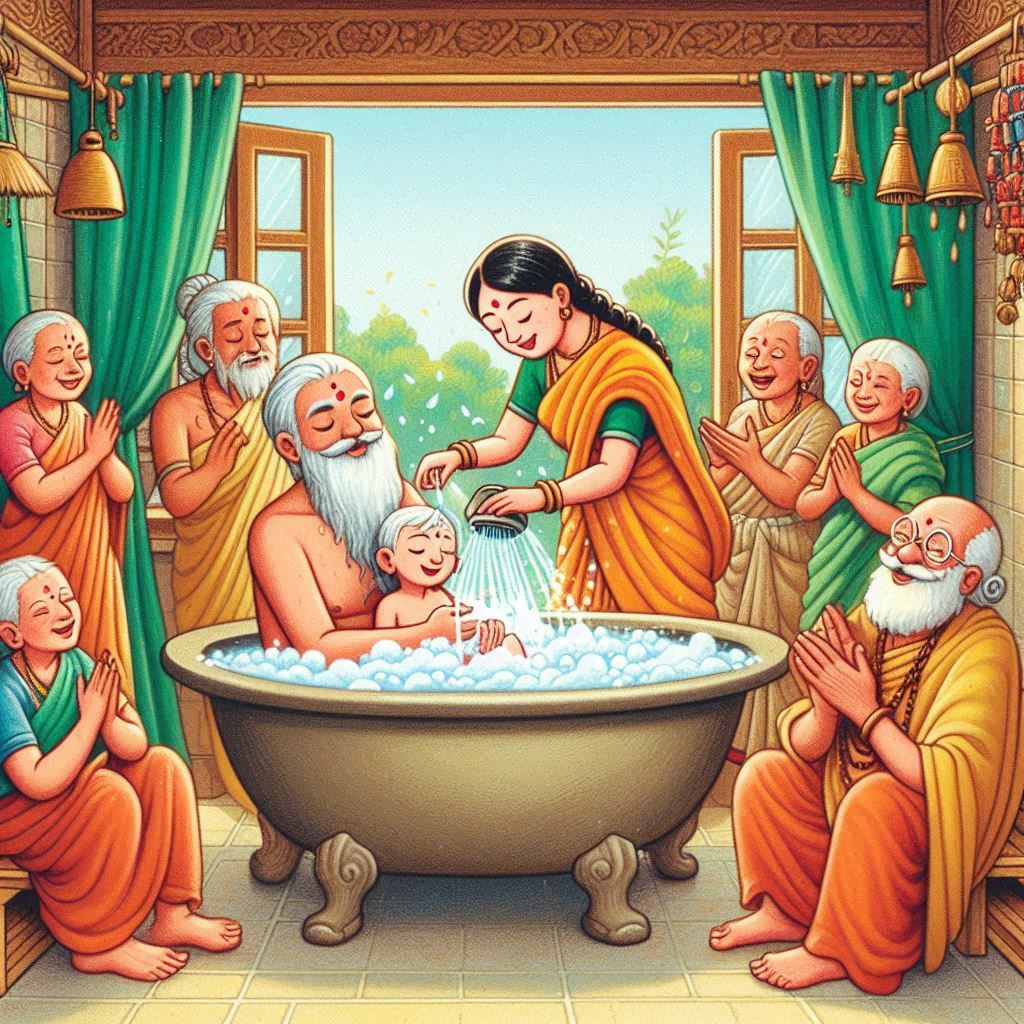
Chapter 3: "After a Bath"
NCERT Class 1 English Chapter 3: "After a Bath"

Introduction
Chapter 3 of NCERT Class 1 English is a short and simple poem titled "After a Bath." This poem is about the joy and activities that follow taking a bath. It helps young learners understand the importance of cleanliness and personal hygiene in a fun and engaging way.
Poem Text
The poem "After a Bath" goes as follows:
After my bath
I try, try, try
To wipe myself
Till I'm dry, dry, dry.
Hands to wipe
And fingers and toes
And two wet legs
And a shiny nose.
Just think how much
Less time I'd take
If I were a dog
And could shake, shake, shake.
Explanation of the Poem

After my bath I try, try, try
The poet begins by telling us what they do after taking a bath. They emphasize the effort put into drying themselves, using the word "try" three times to show determination.
Example
After bathing, one must put in effort to dry themselves thoroughly to avoid catching a cold.
To wipe myself Till I'm dry, dry, dry
The poet continues to explain the process of drying themselves, repeating the word "dry" to stress the importance of being completely dry.
Example
Using a towel to wipe off all the water ensures that you are dry and comfortable.
Hands to wipe And fingers and toes
The poet lists the body parts that need to be dried, starting with hands, fingers, and toes. This teaches children to be thorough in their drying routine.
Example
Remember to dry your hands, fingers, and toes carefully after washing them.
And two wet legs And a shiny nose
The poet mentions other parts of the body that need drying: the legs and the nose. "Shiny nose" indicates the nose is still wet and needs to be dried.
Example
After washing your face, ensure your nose is not wet and shiny by drying it properly.
Just think how much Less time I'd take
The poet imagines how drying would be quicker if they were a dog. This introduces an element of imagination and fun.
Example
Drying yourself can take time, but wouldn’t it be faster if you could just shake off the water like a dog?
If I were a dog And could shake, shake, shake
The poet concludes by picturing the ease of drying if they could shake like a dog. This line adds humor and a playful tone to the poem.
Example
Imagine if you could dry off just by shaking like a dog does!
Word Meanings

Bath
A process of washing the body with water.
Try
To make an effort to do something.
Dry
Free from moisture or liquid; not wet.
Wipe
To clean or dry by rubbing with a cloth or one's hand.
Shake
To move back and forth or up and down with short, quick movements.
Frequently Asked Questions (FAQs)
1. What is the poem "After a Bath" about?
The poem is about the actions taken after taking a bath, particularly the effort to dry oneself.
2. Why does the poet use the word "try" three times?
To emphasize the effort and determination involved in drying oneself.
3. Which body parts does the poet mention drying?
The poet mentions hands, fingers, toes, legs, and nose.
4. What does the phrase "shiny nose" indicate?
It indicates that the nose is still wet and needs to be dried.
5. Why does the poet imagine being a dog?
The poet imagines being a dog to highlight how much easier it would be to dry off by shaking.
6. What lesson does the poem teach about personal hygiene?
The poem teaches the importance of thoroughly drying oneself after a bath.
7. What does "dry, dry, dry" signify in the poem?
It signifies the poet's goal to be completely dry after their bath.
8. How can drying oneself improperly affect health?
Not drying oneself properly can lead to catching a cold or skin irritations.
9. What is the tone of the poem?
The tone of the poem is light-hearted and playful.
10. How does the poet make the poem engaging for children?
The poet uses simple language, repetition, and imagination to make the poem engaging.
11. Why is it important to dry your fingers and toes?
To prevent fungal infections and keep the skin healthy.
12. What does the poet mean by "two wet legs"?
The poet refers to their legs still being wet and needing to be dried.
13. How can children relate to this poem?
Children can relate to the daily routine of drying themselves after a bath.
14. What could be a fun way to dry off according to the poem?
Shaking off the water like a dog could be a fun way to dry off.
15. Why is repetition used in children's poems?
Repetition helps reinforce concepts and makes it easier for children to remember.
16. What imagery is used in the poem?
The poem uses imagery of drying body parts and the idea of shaking like a dog.
17. How does the poet add humor to the poem?
By imagining the fun and ease of drying off if they were a dog.
18. What is the significance of personal hygiene in the poem?
The poem highlights the importance of drying oneself properly to maintain cleanliness.
19. How does the poem help in teaching vocabulary?
The poem introduces and reinforces simple words related to personal hygiene.
20. What is the overall message of the poem?
The overall message is to teach children about the importance of personal hygiene in a fun and engaging way.